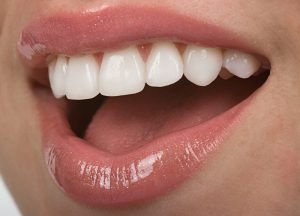When it comes to perfecting smiles and aligning teeth, orthodontic treatments often come to the forefront. Traditional braces have long been the go-to method, but with the advent of modern dental technology, options like Invisalign have emerged. Individuals considering teeth straightening treatments may find themselves asking whether Invisalign is an effective alternative to traditional braces.
Understanding Invisalign
Invisalign is a teeth-straightening treatment that uses a series of clear, removable aligners to move your teeth into the desired position gradually. Unlike traditional braces, these aligners are virtually invisible and can be taken out for eating, brushing, and flossing. The treatment typically involves a digital scan of your mouth, from which a computer generates a series of custom aligners.
Popularity and Accessibility
In recent years, Invisalign has gained popularity for its discreet appearance and the flexibility it offers, but let’s delve into why it might be considered a strong contender against metal braces.
-
Aesthetic Appeal: Clear aligners are less noticeable, which is a significant advantage for adults and teens who are self-conscious about their appearance.
-
Comfort: The smooth plastic reduces the risk of mouth irritation caused by the brackets and wires of traditional braces.
-
Convenience: Since the aligners are removable, maintaining oral hygiene is less complicated.
Effectiveness for Complex Cases
-
Severity of Misalignment: Invisalign works best for mild to moderate dental issues. Severe cases might still require braces.
-
Treatment Time: Invisalign can sometimes straighten teeth faster than braces, depending on the complexity of the case.
-
Precision: Advanced 3D imaging technology allows for precise treatment planning.
The Role of Dental Visits in Orthodontic Treatment
Whether you choose Invisalign or traditional braces, visiting the dentist regularly remains crucial. Regular check-ups ensure the treatment is progressing as planned and potential issues are addressed promptly. For instance, if you schedule an appointment at Wince Dental in McPherson, you could expect a detailed examination to monitor the fit and progress of the aligners or adjustments for braces.
-
Monitoring Progress: Dentists need to track the movement of your teeth to make adjustments to the treatment plan as necessary.
-
Professional Teeth Cleaning: Orthodontic appliances can make cleaning teeth more challenging, increasing the risk of plaque build-up. Regular cleanings help maintain oral health.
-
Personal Oral Care Practices: Dentists can provide customized advice on how to care for teeth during the treatment.
Comparing Costs and Investments
Investing in a straighter, healthier smile is a significant financial decision. The cost of Invisalign can sometimes be higher than traditional braces, depending on various factors like treatment length and complexity.
-
Insurance Coverage: Some dental insurance plans cover a portion of orthodontic treatments, including Invisalign. It’s essential to check what your policy offers.
-
Payment Plans: Many dental practices offer financing options to make treatments more affordable.
-
Long-Term Benefits: Investing in orthodontic treatment can prevent future dental issues, potentially saving money down the line.
Comparing Maintenance and Lifestyle Impact
Maintenance and lifestyle impact are crucial considerations when choosing between Invisalign and braces. The right choice depends on your personal preference and commitment to the treatment.
-
Dietary Restrictions: With removable aligners, there are no food restrictions as with traditional braces.
-
Daily Commitment: Aligners must be worn 20-22 hours a day to be effective, requiring discipline.
-
Home Dental Care: Invisalign requires a meticulous dental care routine to prevent cavities and gum disease.
Impact on Oral Health and Hygiene
Maintaining oral health is simpler with Invisalign due to the ability to remove the aligners to brush and floss thoroughly. Conversely, braces can complicate hygiene practices and may lead to an increased risk of tooth decay or gum disease if not cared for correctly.
-
Consistency: Regular brushing and flossing are vital to prevent plaque buildup around the aligners.
-
Routine Cleaning: Aligners should be cleaned regularly to maintain oral hygiene and prevent odors.
-
Regular Dental Cleanings: Professional cleanings are essential to remove any tartar that can’t be eliminated at home.
Exploring Types of Dental Services
Orthodontics is just one facet of dental healthcare. Comprehensive dental services encompass a wide range of treatments, from preventive care to cosmetic procedures. For example, if you’re looking to discover dental implant solutions, you’d seek a practice that offers a variety of cosmetic and restorative dental services.
-
Preventive Dentistry: Includes routine exams, cleanings, and education to prevent dental issues.
-
Cosmetic Dentistry: Encompasses procedures like teeth whitening services and veneers to enhance smiles.
-
Therapeutic Services: Covers fillings, crowns, and bridges to repair damaged teeth.
Is Invisalign the Right Choice for Everyone?
Ultimately, whether Invisalign is the right choice for you will depend on a range of individual factors: the complexity of your dental issues, lifestyle preferences, budget, and treatment goals. I think consulting with a dentist is essential to determine the most effective treatment for your situation.
-
Assessment: A thorough dental exam will establish the best course of action for your teeth alignment needs.
-
Expectations: Discussing your expectations and any concerns with your dentist will help you make an informed choice.
-
Variety of Treatments: A good dental practice will offer a range of treatments, including pediatric dentistry, emergency dental services, and dental surgery services.
Wrapping Up
When considering Invisalign as an alternative to braces, it’s important to weigh all facets of the treatment against your personal needs and preferences. Remember that maintaining oral health is paramount, whether with traditional braces or clear aligners. Regular dental visits, adherence to a robust dental care routine, and attention to oral hygiene are fundamental regardless of the orthodontic method chosen.
Choosing the optimal path to a perfect smile is a collaborative journey that involves professional guidance and personal care practices. By considering all aspects of orthodontic treatment and engaging in open communication with your dentist, you can ensure that your path to a straighter smile is both effective and suited to your lifestyle.


